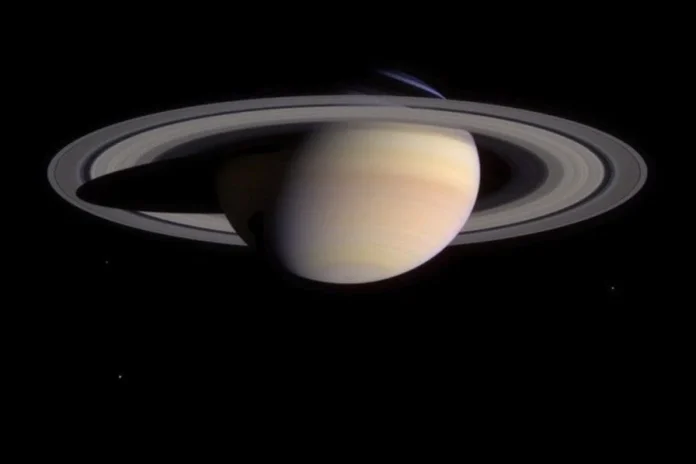Saturn will temporarily lose its iconic appearance from Earth’s perspective, appearing as a faint yellow sphere without its swirling rings surrounding the gas giant.
This Sunday, March 23, the billions of icy and rocky fragments that make up Saturn’s rings will disappear from view as the planet’s thin ring edges align with Earth. This rare phenomenon occurs once every 13 to 15 years when Earth crosses Saturn’s ring plane. The last time Earth witnessed this event was in 2009.
Saturn is surrounded by billions of pieces of comets, asteroids, and broken moons captured by the planet’s gravity. Its stunning ring system, which extends up to 175,000 miles (282,000 kilometers) from the planet, is made up of tiny icy grains as well as larger chunks the size of a house, according to NASA. Similar to Earth, Saturn’s axis is tilted by 26.73 degrees. As it orbits the Sun, this tilt shifts in relation to Earth, causing its rings to disappear from our view when Earth crosses the plane of Saturn’s rings. When Saturn’s tilt faces Earth, we see the top of the rings, and when it tilts away, we see the bottom. Between these phases, the rings appear to vanish. With a powerful telescope, a thin line around the planet’s middle can still be detected.
The plane crossing will begin at approximately 12:04 p.m. ET on Sunday, according to in-the-sky.org. Saturn’s rings won’t be fully visible from Earth for a few months, possibly not until November, according to earth.com. Skywatchers in mid-southern latitudes will have the best chance of spotting the ringless Saturn if they can catch it during the morning twilight on the eastern horizon, as per space.com. Those in mid-northern latitudes will face challenges, as Saturn will be near the Sun at pre-dawn and below the slanted morning ecliptic.
Though the conditions may not be ideal for most skywatchers, this celestial event offers a rare opportunity to witness the dynamic movement of planets around our shared star.



 Viesearch - The Human-curated Search Engine
Blogarama - Blog Directory
Web Directory gma
Directory Master
http://tech.ellysdirectory.com
8e3055d3-6131-49a1-9717-82ccecc4bb7a
Viesearch - The Human-curated Search Engine
Blogarama - Blog Directory
Web Directory gma
Directory Master
http://tech.ellysdirectory.com
8e3055d3-6131-49a1-9717-82ccecc4bb7a